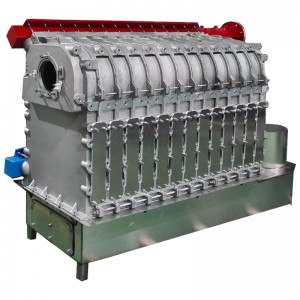- Afrikaans
- Albanian
- Amharic
- Arabic
- Armenian
- Azerbaijani
- Basque
- Belarusian
- Bengali
- Bosnian
- Bulgarian
- Catalan
- Cebuano
- China
- China (Taiwan)
- Corsican
- Croatian
- Czech
- Danish
- Dutch
- English
- Esperanto
- Estonian
- Finnish
- French
- Frisian
- Galician
- Georgian
- German
- Greek
- Gujarati
- Haitian Creole
- hausa
- hawaiian
- Hebrew
- Hindi
- Miao
- Hungarian
- Icelandic
- igbo
- Indonesian
- irish
- Italian
- Japanese
- Javanese
- Kannada
- kazakh
- Khmer
- Rwandese
- Korean
- Kurdish
- Kyrgyz
- Lao
- Latin
- Latvian
- Lithuanian
- Luxembourgish
- Macedonian
- Malgashi
- Malay
- Malayalam
- Maltese
- Maori
- Marathi
- Mongolian
- Myanmar
- Nepali
- Norwegian
- Norwegian
- Occitan
- Pashto
- Persian
- Polish
- Portuguese
- Punjabi
- Romanian
- Russian
- Samoan
- Scottish Gaelic
- Serbian
- Sesotho
- Shona
- Sindhi
- Sinhala
- Slovak
- Slovenian
- Somali
- Spanish
- Sundanese
- Swahili
- Swedish
- Tagalog
- Tajik
- Tamil
- Tatar
- Telugu
- Thai
- Turkish
- Turkmen
- Ukrainian
- Urdu
- Uighur
- Uzbek
- Vietnamese
- Welsh
- Bantu
- Yiddish
- Yoruba
- Zulu
Νοέ . 29, 2024 11:57 Back to list
Exploring the Innovations and Trends in Casting Foundries Today
The Vital Role of Casting Foundries in Modern Manufacturing
In the intricate world of manufacturing, casting foundries stand as crucial pillars, transforming raw metals into highly engineered components. The process of casting has ancient roots, traced back thousands of years, yet it remains foundational in today’s high-tech industries. This article delves into the significance of casting foundries, exploring their processes, applications, and advancements in technology.
Understanding Casting Foundries
Casting foundries are specialized facilities that utilize metal casting processes to produce parts and components from molten metal. These foundries work with a variety of metals, including iron, aluminum, bronze, and steel, allowing them to cater to diverse industrial requirements. The casting process involves several steps pattern making, mold preparation, melting, pouring, and finishing.
1. Pattern Making The process starts with creating a pattern, usually made from wood, metal, or plastic, which reflects the exact shape and dimensions of the final product. The quality of the pattern significantly affects the finished cast.
2. Mold Preparation Molds are created using the pattern. Common mold materials include sand, plaster, or metal. The chosen material impacts the precision and finish of the casted object.
3. Melting The metal is then melted in a furnace, reaching temperatures that can exceed 1,500 degrees Celsius, depending on the metal type.
4. Pouring Once melted, the liquid metal is poured into the prepared mold, filling the cavity and taking the shape of the pattern.
5. Finishing After the metal cools and solidifies, the mold is broken away to reveal the cast component. Additional finishing processes, like machining, surface treatment, or assembly, may be required to meet specific standards.
casting foundries

Applications of Casting Foundries
Casting foundries play an indispensable role across various sectors, including automotive, aerospace, construction, and consumer products. Modern vehicles utilize countless cast components, from engine blocks to suspension systems. In aerospace, lightweight cast parts are vital for reducing fuel consumption without compromising safety.
Furthermore, the construction industry relies on cast metals for structural elements, piping, and fixtures. Even everyday products, such as kitchenware and decorative items, often originate from casting foundries. This extensive applicability underscores the versatility and importance of casting processes in fulfilling contemporary manufacturing demands.
The Advancements in Casting Technologies
While traditional casting methods remain prevalent, advancements in technology have substantially transformed the industry. Innovations such as 3D printing in patternmaking allow for greater design flexibility and reduced lead times. This technology fosters the production of complex geometries that would be challenging or impossible to achieve with conventional methods.
Moreover, the introduction of computer-aided design (CAD) and computer-aided manufacturing (CAM) have enhanced precision and reduced waste, leading to more sustainable practices in foundries. These technologies enable engineers to create detailed simulations of the casting process, identifying potential flaws and making necessary adjustments before production begins.
Sustainability is increasingly recognized in the foundry sector, with many facilities implementing practices to minimize their environmental footprint. This includes recycling scrap metal, optimizing energy use, and employing cleaner melting technologies. Efforts to reduce emissions and waste are becoming essential for compliance with regulations and for appealing to environmentally conscious consumers.
Conclusion
Casting foundries are more than mere facilities; they are vital engines driving innovation in manufacturing. As industries continue to evolve, the role of foundries will expand, adapting to new materials and processes. The blending of traditional techniques with modern technology ensures that casting remains a relevant and essential part of the manufacturing landscape. In an increasingly complex industrial world, the art and science of casting will undoubtedly continue to shape the future, providing high-quality components necessary for a wide array of applications.
-
Durable Cast Iron Water Main Pipe | AI-Optimized Design
NewsAug.05,2025
-
8mm Thin-Walled Cast Steel Manhole Cover Pallet Bottom Ring | Durable
NewsAug.04,2025
-
Premium Cast Iron Water Main Pipe: Durable, Corrosion-Resistant
NewsAug.03,2025
-
Durable Cast Iron Water Mains | AI-Optimized Systems
NewsAug.02,2025
-
High-Efficiency Propane Boiler for Baseboard Heat | Save Energy
NewsAug.01,2025
-
Premium Source Suppliers for Various Gray Iron Castings
NewsJul.31,2025


